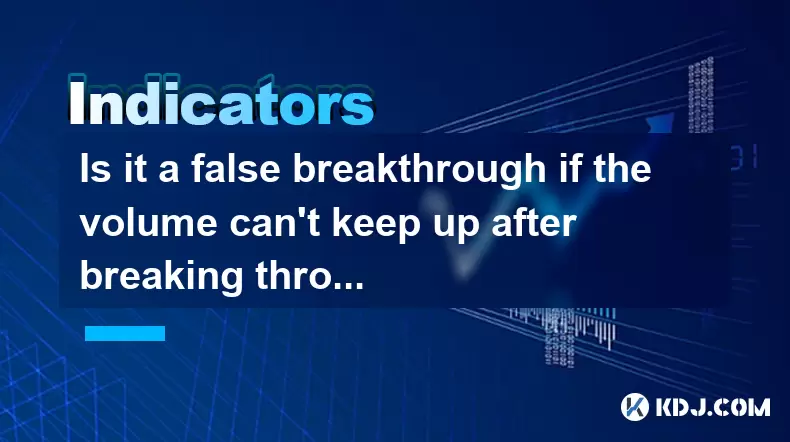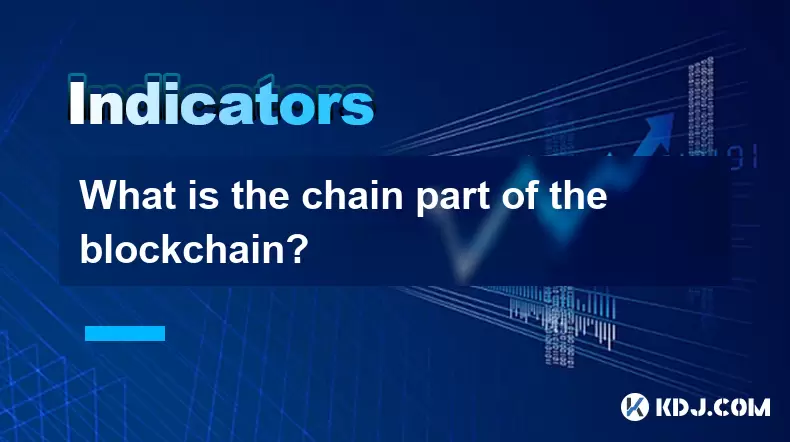-
 Bitcoin
Bitcoin $115000
0.12% -
 Ethereum
Ethereum $3701
4.50% -
 XRP
XRP $3.081
2.99% -
 Tether USDt
Tether USDt $0.0000
-0.01% -
 BNB
BNB $767.9
1.45% -
 Solana
Solana $169.5
3.13% -
 USDC
USDC $0.9999
0.01% -
 Dogecoin
Dogecoin $0.2106
4.30% -
 TRON
TRON $0.3334
1.62% -
 Cardano
Cardano $0.7564
2.54% -
 Stellar
Stellar $0.4165
0.76% -
 Hyperliquid
Hyperliquid $38.75
0.25% -
 Sui
Sui $3.593
3.00% -
 Chainlink
Chainlink $17.08
3.59% -
 Bitcoin Cash
Bitcoin Cash $573.6
4.35% -
 Hedera
Hedera $0.2508
-0.84% -
 Avalanche
Avalanche $23.07
6.46% -
 Ethena USDe
Ethena USDe $1.001
-0.02% -
 Litecoin
Litecoin $120.8
8.17% -
 UNUS SED LEO
UNUS SED LEO $8.943
-0.32% -
 Toncoin
Toncoin $3.400
-5.60% -
 Shiba Inu
Shiba Inu $0.00001255
1.54% -
 Uniswap
Uniswap $9.908
6.32% -
 Polkadot
Polkadot $3.718
2.10% -
 Monero
Monero $303.0
-0.74% -
 Dai
Dai $0.9999
-0.02% -
 Bitget Token
Bitget Token $4.392
0.91% -
 Cronos
Cronos $0.1403
6.31% -
 Pepe
Pepe $0.00001076
1.13% -
 Aave
Aave $267.2
1.80%
Is it a false breakthrough if the volume can't keep up after breaking through the previous high?
A breakout in crypto trading is confirmed by rising volume and sustained price action above resistance levels, signaling potential bullish momentum.
Jun 18, 2025 at 10:21 pm

Understanding Breakthroughs in Cryptocurrency Trading
In the cryptocurrency market, a breakthrough refers to a price movement where an asset surpasses a previously established resistance level. This often leads traders to believe that the asset may be entering a new bullish phase. However, not all breakthroughs are genuine. A false breakthrough, or a fakeout, occurs when the price temporarily moves beyond a key level but quickly reverses, trapping traders who entered positions expecting continued momentum.
One of the most critical factors in determining whether a breakout is valid or false is volume. Volume represents the total number of assets traded over a specific time period and serves as a confirmation tool for price action. When volume aligns with a breakout, it suggests strong market participation and conviction behind the move. Conversely, if volume fails to increase during a breakout, it raises red flags among experienced traders.
The Role of Volume in Validating Breakouts
Volume acts as the fuel behind any meaningful price movement. In technical analysis, it's commonly said that price follows volume. If a cryptocurrency breaks above a previous high but does so on low volume, it indicates that few traders are actively participating in the move. This lack of engagement often results in weak follow-through, making it more likely that the breakout will fail.
For example, suppose Bitcoin reaches a new all-time high, but the trading volume remains flat compared to previous rallies. In this scenario, the absence of strong buying pressure suggests that the rally may be driven by automated systems or minor order flow rather than real demand from institutional or retail investors.
To assess whether a breakout has support, traders often compare current volume levels to the average volume over the past 10 to 20 days. A significant surge—often 50% or more above the average—is typically seen as a green flag. If this doesn't occur, it could indicate a false breakout.
Identifying False Breakouts Through Price Action
Price action plays a crucial role in confirming or rejecting breakouts. After breaking through a resistance level, a genuine breakout should see prices stabilize above that level and continue pushing higher. On the other hand, a false breakout usually results in a quick reversal back below the resistance zone, often accompanied by bearish candlestick patterns like shooting stars, engulfing candles, or hanging men.
Traders can also look at how many candles close above the resistance level. A single candle piercing through without follow-through is often a trap set by large players to trigger stop-loss orders. A valid breakout, however, usually sees multiple closes above the key level, indicating sustained strength.
Another indicator to watch is liquidity absorption. If a sudden spike in price occurs without corresponding volume, it might mean that large orders were executed in low-liquidity zones, which can easily reverse once the market regains balance.
How Institutional Activity Influences Breakouts
The presence—or absence—of institutional involvement can significantly affect the validity of a breakout. Large financial entities such as hedge funds, banks, and ETF providers tend to trade with massive volumes. Their activity is often visible through spikes in on-chain and exchange-based volume metrics.
If a cryptocurrency breaks out but institutional volume isn’t present, it may suggest that the move lacks legitimacy. Retail traders might be driving the rally, which can be volatile and short-lived. Tools such as on-chain analytics platforms, including Glassnode or Chainalysis, allow traders to monitor inflows and outflows from exchanges, providing insights into whether whales or institutions are accumulating or distributing the asset.
Additionally, derivatives markets like futures and options can offer clues. A breakout accompanied by rising open interest in futures contracts indicates that professional traders are taking positions expecting further movement. The opposite—low or declining open interest—can signal a lack of confidence in the sustainability of the breakout.
Technical Indicators That Complement Volume Analysis
While volume is essential, combining it with other technical indicators enhances the ability to distinguish between real and fake breakouts. One such indicator is the On-Balance Volume (OBV), which adds volume on up days and subtracts it on down days. A rising OBV line confirms bullish momentum, while a falling OBV warns of weakening sentiment.
Another useful tool is the Volume Weighted Average Price (VWAP). During a breakout attempt, if the price remains consistently above VWAP and volume supports this move, it increases the likelihood of a sustainable trend. Conversely, if the price crosses above VWAP but volume doesn’t confirm, the breakout may fizzle.
The Relative Strength Index (RSI) also plays a role. A breakout that coincides with RSI moving above 50 and continuing upward shows strength. However, if RSI diverges—rising price but falling RSI—it suggests weakening momentum and potential exhaustion.
Common Misinterpretations of Volume Data
Many novice traders misinterpret volume data due to a lack of context. For instance, high volume on a small price move doesn’t necessarily indicate strength. It could reflect panic selling or wash trading on unregulated exchanges. Similarly, low volume during consolidation phases is normal and shouldn't automatically be viewed as negative.
It’s also important to differentiate between real volume and manipulated volume. Some exchanges inflate their volume figures to appear more liquid than they are. Traders should rely on third-party tools like CoinGecko or CoinMarketCap, which filter out suspicious data.
Furthermore, volume spikes can occur due to news events, halvings, or macroeconomic announcements. These anomalies need to be evaluated separately from regular market behavior. A one-off spike without continuation isn't enough to validate a long-term trend.
Frequently Asked Questions
Q: Can a breakout still be valid if volume is low but the price continues to rise afterward?
A: Yes, though rare, some breakouts can gain traction even with initially low volume. However, these moves are often vulnerable to sharp corrections unless volume picks up soon after the initial breakout.
Q: How do I differentiate between real and fake volume on crypto exchanges?
A: Use third-party verification platforms like CoinGecko or Dune Analytics to cross-check reported volume against actual on-chain data and exchange inflows/outflows.
Q: Does low volume always mean a false breakout?
A: Not necessarily. Low volume may simply indicate a calm market. Context matters—check for upcoming events, liquidity conditions, and whether major holders are active.
Q: Are false breakouts more common in altcoins compared to Bitcoin or Ethereum?
A: Yes, altcoins are more prone to manipulation due to lower liquidity. Fakeouts are frequently observed in smaller-cap tokens where large orders can easily distort price and volume.
Disclaimer:info@kdj.com
The information provided is not trading advice. kdj.com does not assume any responsibility for any investments made based on the information provided in this article. Cryptocurrencies are highly volatile and it is highly recommended that you invest with caution after thorough research!
If you believe that the content used on this website infringes your copyright, please contact us immediately (info@kdj.com) and we will delete it promptly.
- Solana Memecoin Mania: Trader Profit Secrets Revealed!
- 2025-08-05 20:30:13
- POL Price Rebound: Will Consolidation Lead to a Breakout?
- 2025-08-05 20:30:13
- Shiba Inu's Ranking: What's Happening with the Cryptocurrency?
- 2025-08-05 19:10:13
- Cryptos Under $1: BlockchainFX vs. Shiba Inu - What's the Hype?
- 2025-08-05 19:10:13
- Crypto Stocks, Smart Money, and Falling Prices: What's the Deal?
- 2025-08-05 19:50:12
- Bitcoin, Treasuries, and ETFs: Decoding the Latest Crypto Market Moves
- 2025-08-05 19:50:12
Related knowledge

What is a nonce and how is it used in Proof of Work?
Aug 04,2025 at 11:50pm
Understanding the Concept of a Nonce in CryptographyA nonce is a number used only once in cryptographic communication. The term 'nonce' is derived fro...

What is a light client in blockchain?
Aug 03,2025 at 10:21am
Understanding the Role of a Light Client in Blockchain NetworksA light client in blockchain refers to a type of node that interacts with the blockchai...

Is it possible to alter or remove data from a blockchain?
Aug 02,2025 at 03:42pm
Understanding the Immutable Nature of BlockchainBlockchain technology is fundamentally designed to ensure data integrity and transparency through its ...

How do I use a blockchain explorer to view transactions?
Aug 02,2025 at 10:01pm
Understanding What a Blockchain Explorer IsA blockchain explorer is a web-based tool that allows users to view all transactions recorded on a blockcha...

What determines the block time of a blockchain?
Aug 03,2025 at 07:01pm
Understanding Block Time in Blockchain NetworksBlock time refers to the average duration it takes for a new block to be added to a blockchain. This in...

What is the chain part of the blockchain?
Aug 02,2025 at 09:29pm
Understanding the Concept of 'Chain' in BlockchainThe term 'chain' in blockchain refers to the sequential and immutable linkage of data blocks that fo...

What is a nonce and how is it used in Proof of Work?
Aug 04,2025 at 11:50pm
Understanding the Concept of a Nonce in CryptographyA nonce is a number used only once in cryptographic communication. The term 'nonce' is derived fro...

What is a light client in blockchain?
Aug 03,2025 at 10:21am
Understanding the Role of a Light Client in Blockchain NetworksA light client in blockchain refers to a type of node that interacts with the blockchai...

Is it possible to alter or remove data from a blockchain?
Aug 02,2025 at 03:42pm
Understanding the Immutable Nature of BlockchainBlockchain technology is fundamentally designed to ensure data integrity and transparency through its ...

How do I use a blockchain explorer to view transactions?
Aug 02,2025 at 10:01pm
Understanding What a Blockchain Explorer IsA blockchain explorer is a web-based tool that allows users to view all transactions recorded on a blockcha...

What determines the block time of a blockchain?
Aug 03,2025 at 07:01pm
Understanding Block Time in Blockchain NetworksBlock time refers to the average duration it takes for a new block to be added to a blockchain. This in...

What is the chain part of the blockchain?
Aug 02,2025 at 09:29pm
Understanding the Concept of 'Chain' in BlockchainThe term 'chain' in blockchain refers to the sequential and immutable linkage of data blocks that fo...
See all articles

























































































